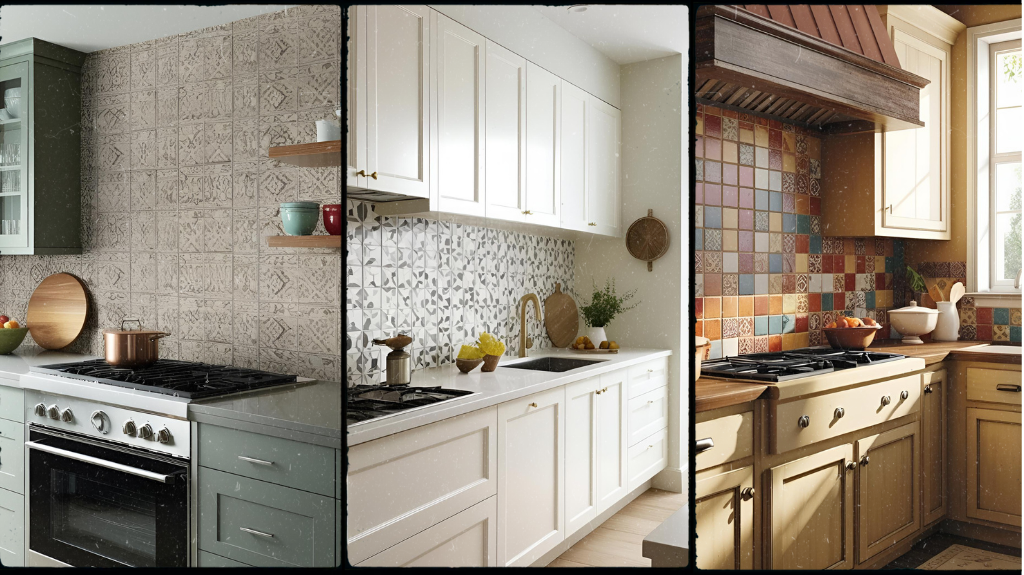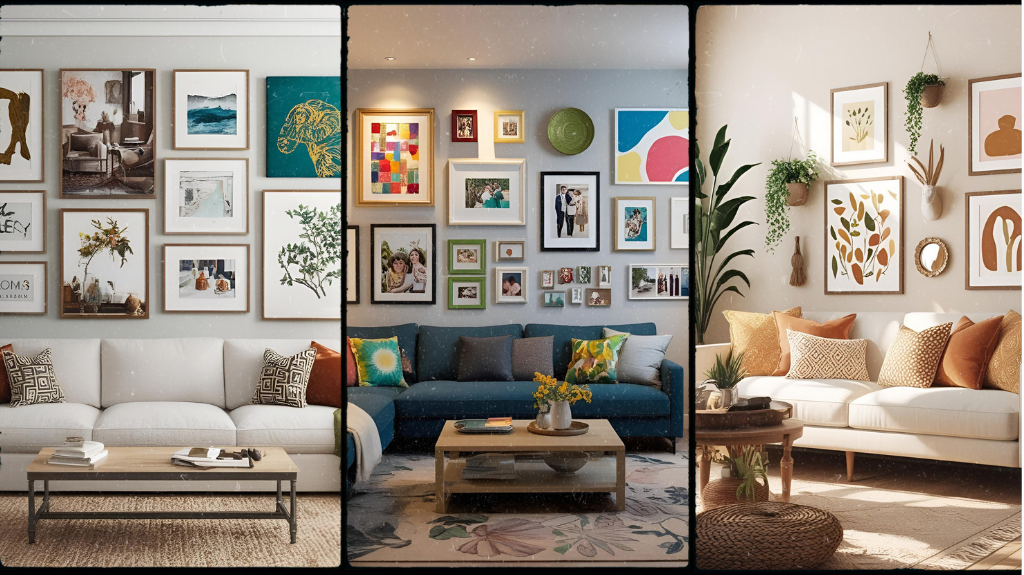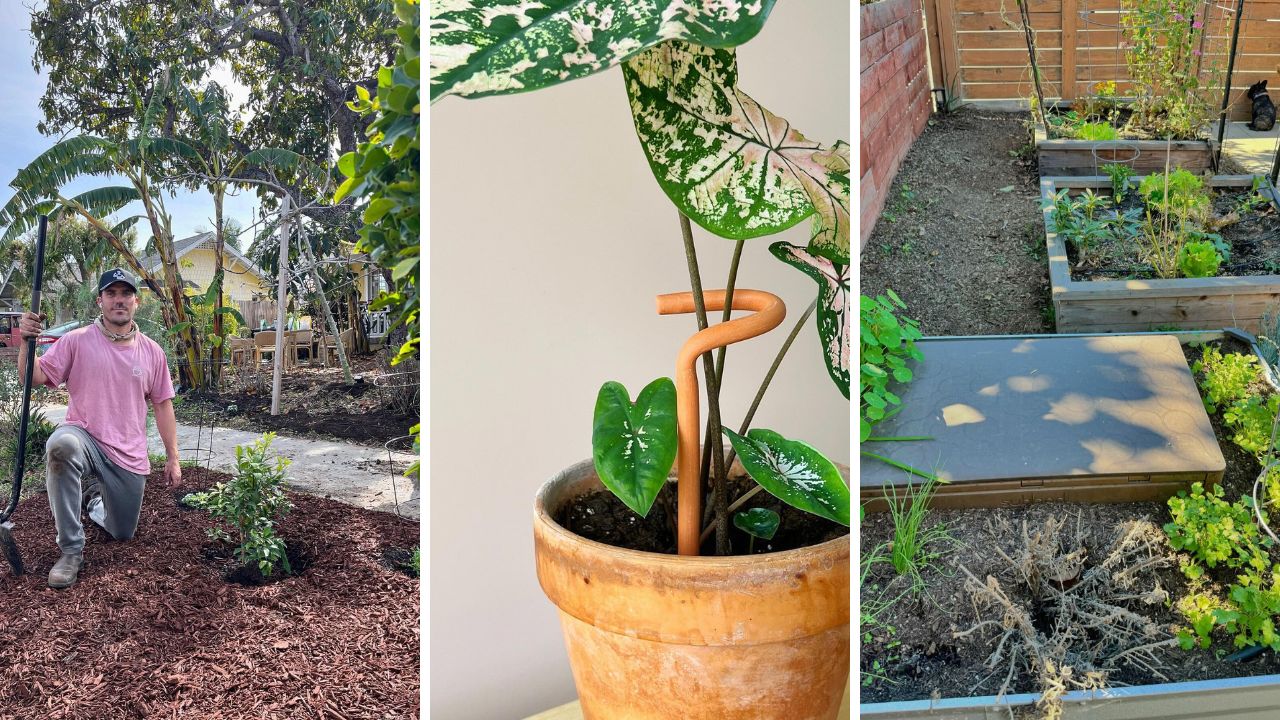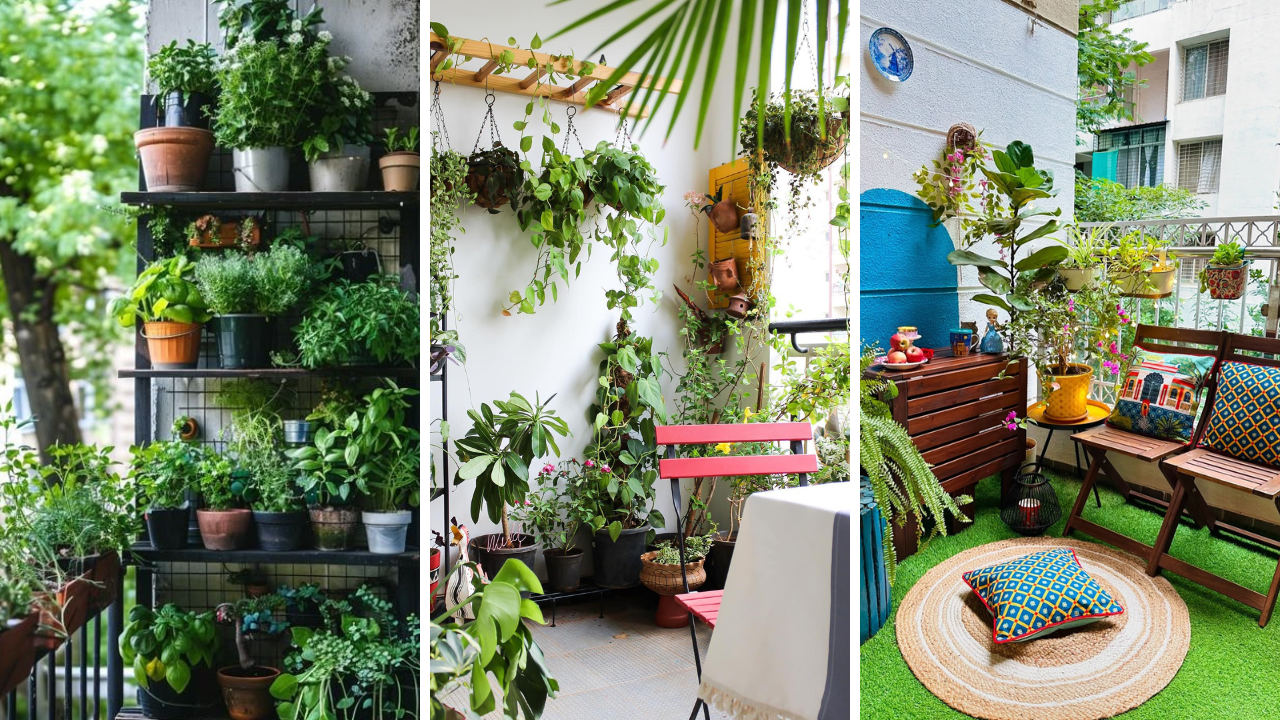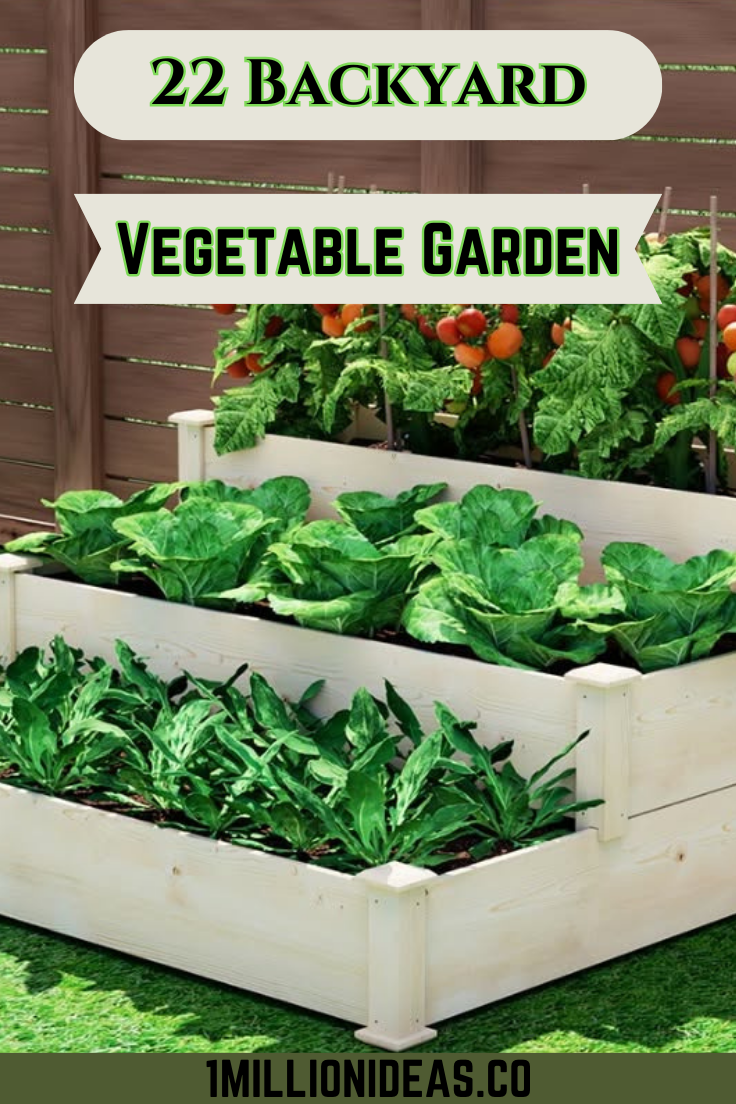
Creating a backyard vegetable garden isn’t just about growing food—it’s about designing a beautiful, functional space that fits your lifestyle. Whether you have a sprawling yard or a small patio, choosing the right garden layout can make all the difference in how productive and enjoyable your gardening experience will be. From raised beds and companion planting to vertical gardens and greenhouse setups, the right design can maximize your harvest while adding charm to your outdoor space. In this guide, we’ll explore 22 incredible vegetable garden layouts that will inspire you to turn your backyard into a flourishing oasis. Plus, we’ll recommend essential tools and accessories to help you set up the perfect garden with ease. Whether you’re a beginner looking for a simple setup or an experienced gardener wanting to optimize your space, these layouts will provide the perfect foundation for your homegrown vegetables. Let’s dive in!
1. Raised Bed Garden Layout – Organized and Productive
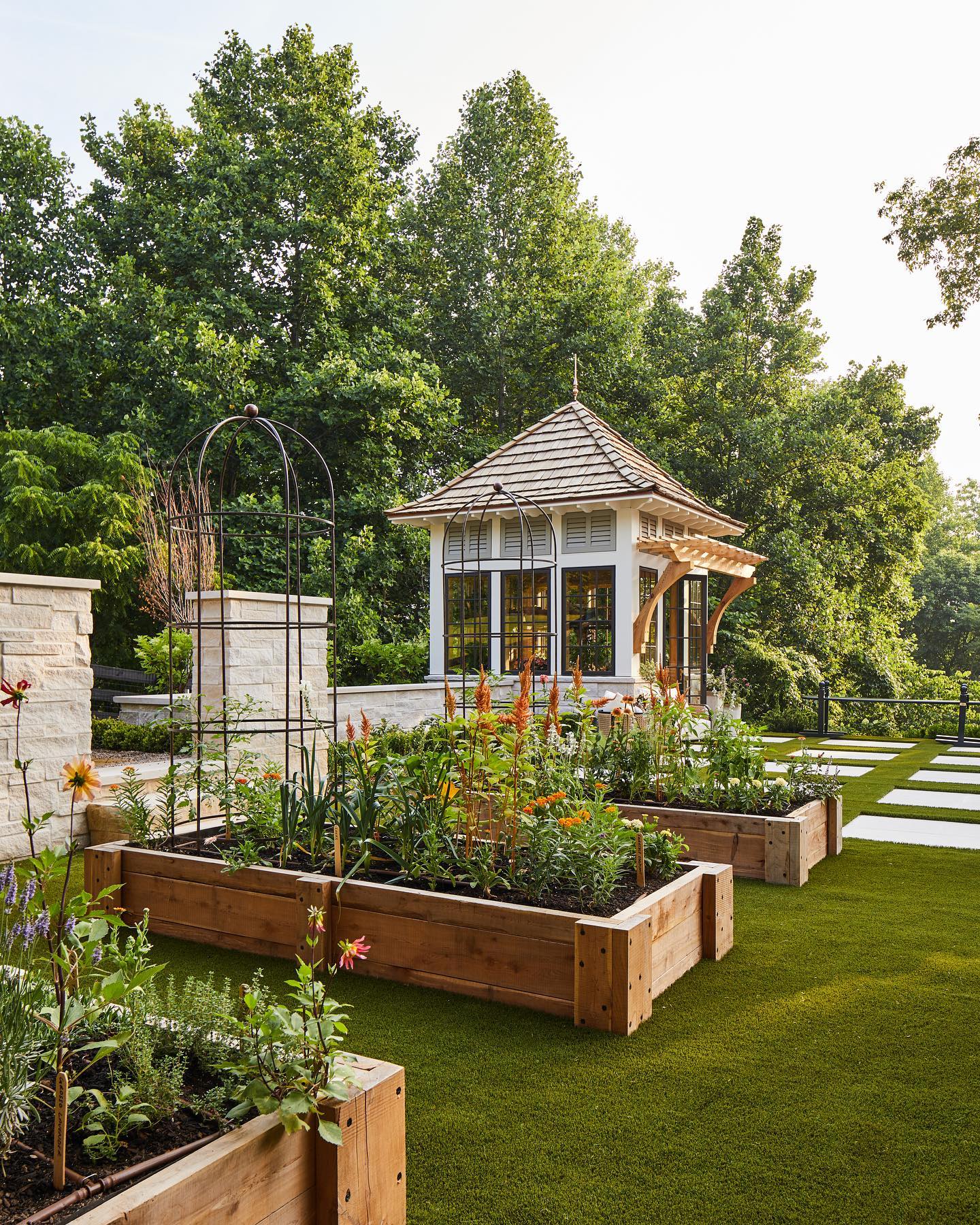
source@saragasbarra
A raised bed garden is one of the most efficient and beginner-friendly ways to grow vegetables. These beds, typically framed with wood, stone, or metal, create a well-defined planting area that improves soil drainage, reduces weeds, and prevents soil compaction. With a raised bed layout, you can control soil quality more easily, ensuring that your plants receive the best nutrients for optimal growth. This design is also excellent for people with mobility issues, as the elevated height reduces the need for bending and kneeling. For an effortless setup, consider a raised garden bed kit from Amazon that comes pre-cut and ready to assemble.
2. Square Foot Gardening – Perfect for Small Spaces
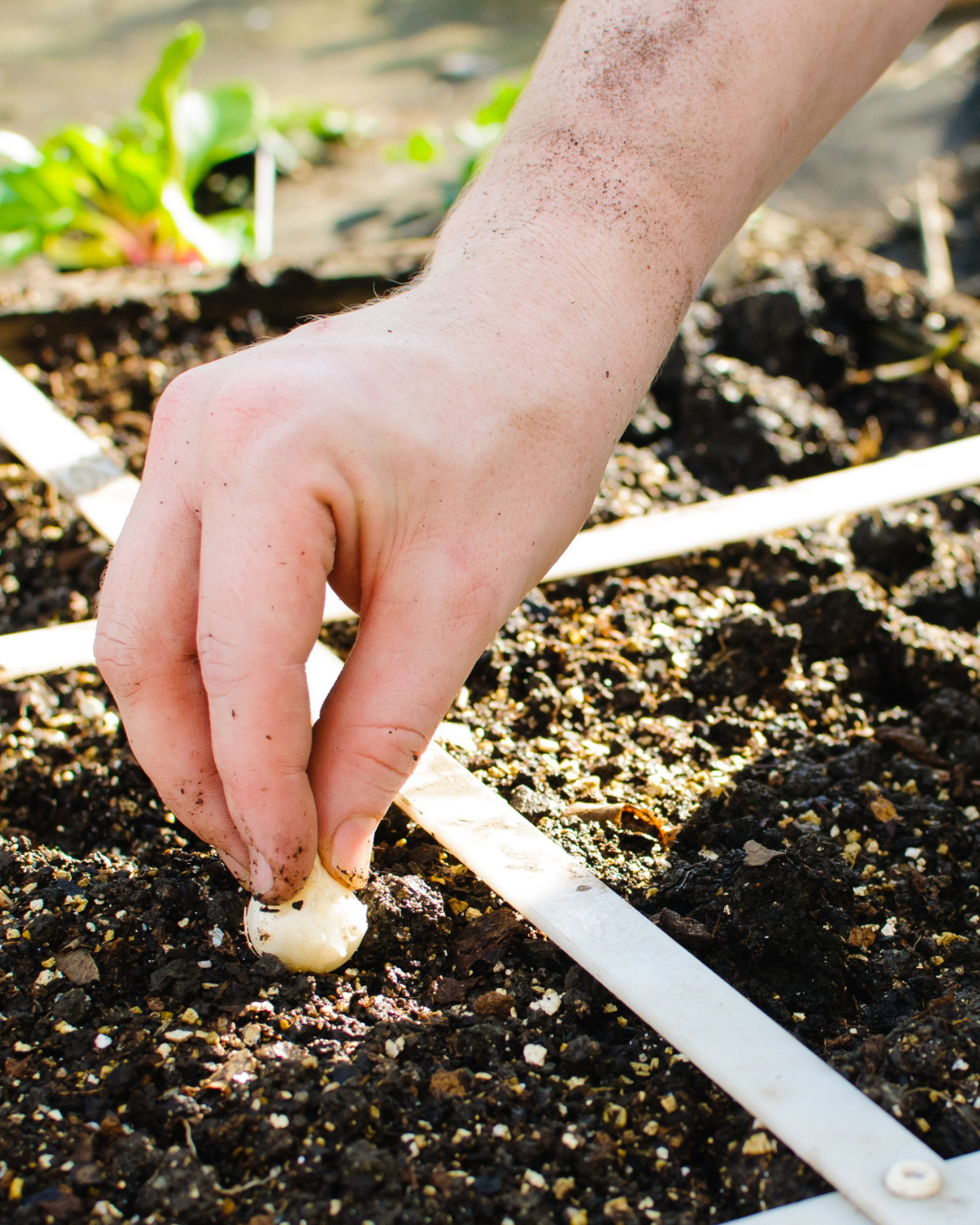
source@wellnessmama
If you have limited space but still want a productive vegetable garden, square foot gardening is an excellent solution. This method divides your garden into small, manageable sections, usually 12-inch squares, to maximize plant growth and minimize waste. It’s a great way to ensure each plant gets the right amount of space while keeping your garden neat and organized. The best part? Square foot gardening reduces the need for excessive weeding and watering, making it a low-maintenance choice for busy gardeners. To get started, a square foot gardening planner book can help you plan the best combinations of vegetables to plant together.
3. Companion Planting Layout – Grow Healthier Vegetables
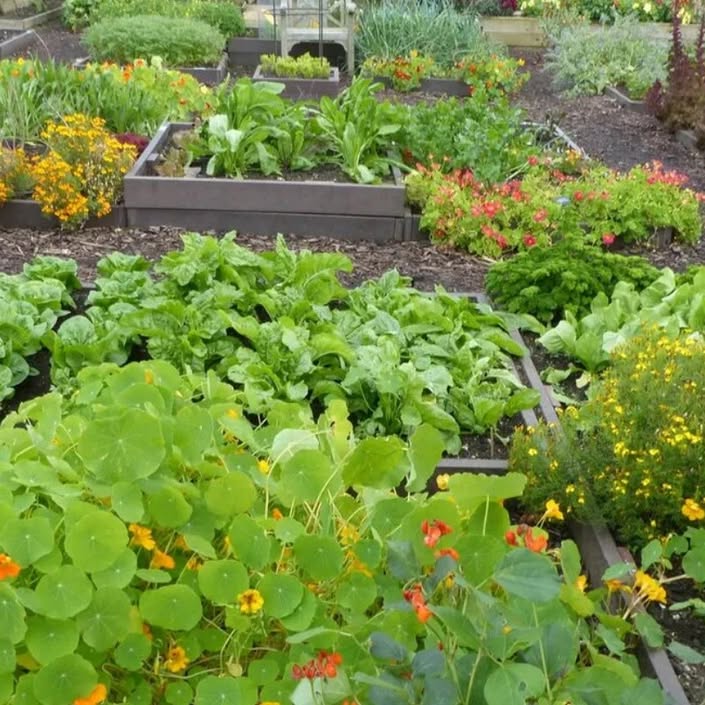
source@theoldfarmersalmanac
Companion planting is a strategic garden layout that pairs certain plants together to enhance growth, deter pests, and improve soil health. For example, planting basil next to tomatoes can improve flavor and repel insects, while marigolds can help keep pests away from beans and lettuce. A well-planned companion planting layout creates a balanced ecosystem that reduces the need for chemical pesticides and fertilizers. If you want to try this method, a companion planting guidebook will help you determine which plants work best together.
4. U-Shaped Garden Layout – Easy Access to Every Plant
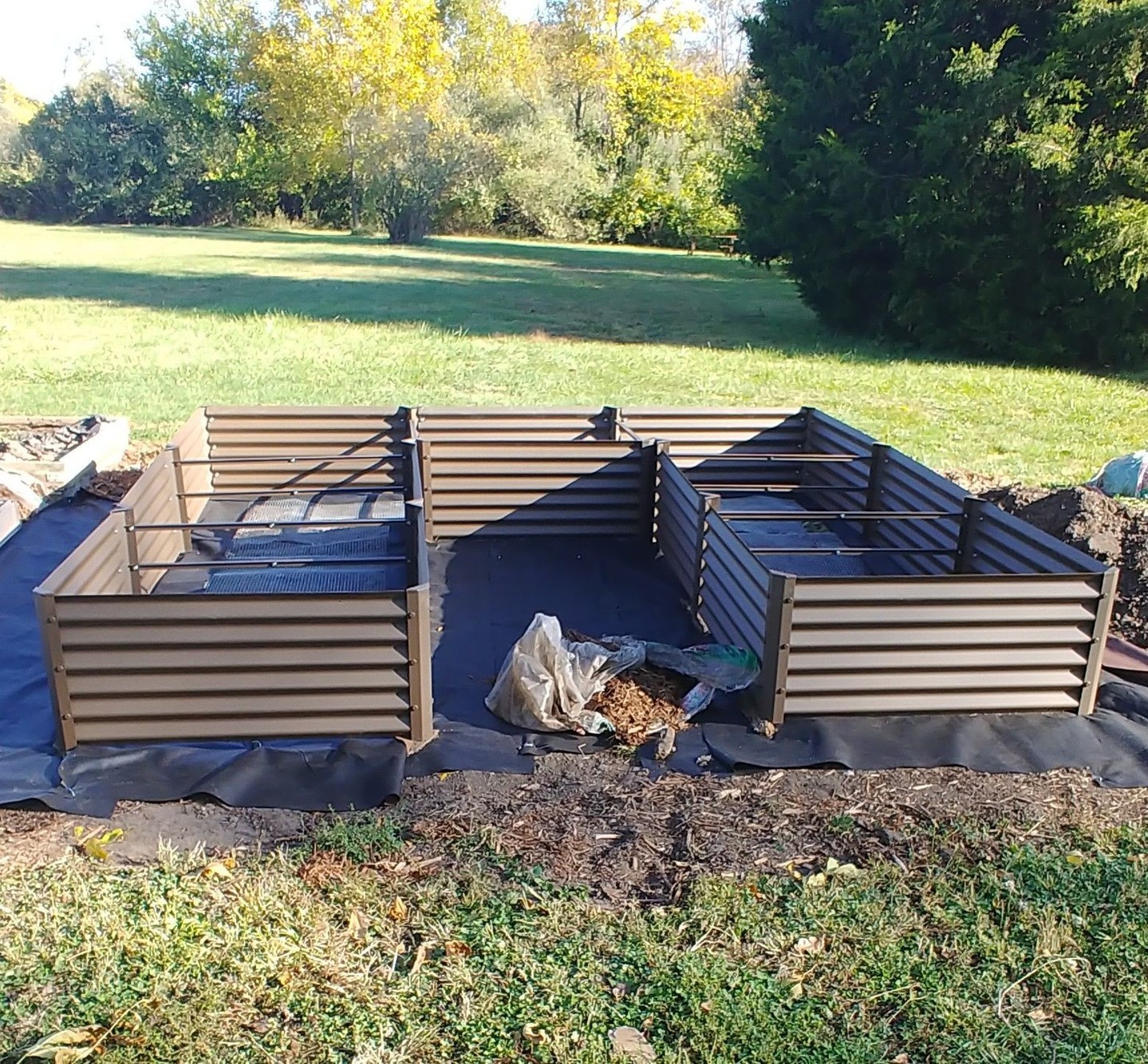
source@metalgardenbeds
A U-shaped garden is perfect for gardeners who want easy access to their plants from all sides. This design creates a curved or rectangular pathway around the planting beds, allowing you to reach every part of the garden without stepping on the soil. This prevents soil compaction, leading to better root growth and healthier plants. The U-shaped layout is particularly useful for raised beds, as it provides an efficient and organized structure for your vegetable garden. If you’re considering this layout, a raised garden border kit can help define the shape and keep everything tidy.
5. L-Shaped Garden – A Space-Saving Corner Design
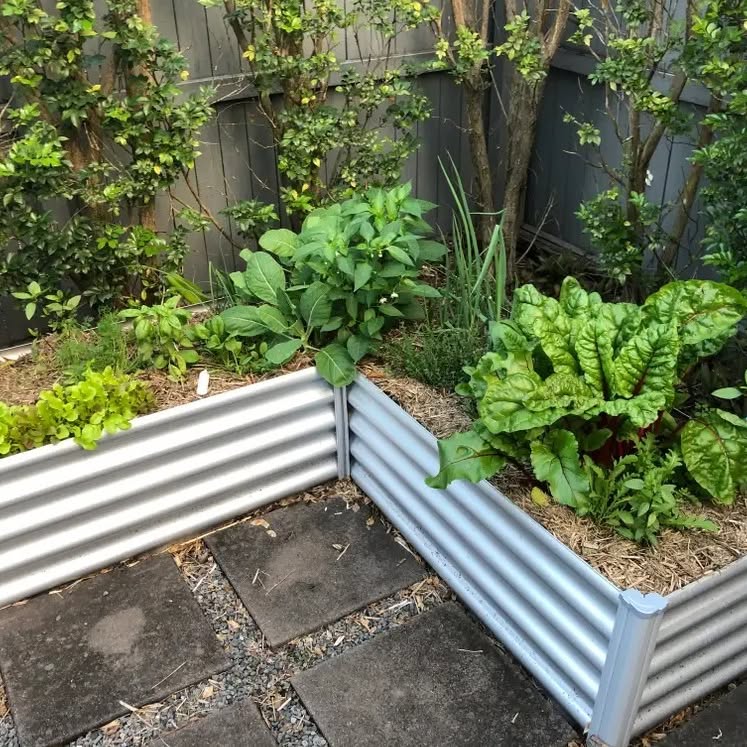
source@theorganicgardencoau
An L-shaped vegetable garden is a clever way to utilize the corners of your backyard, making it perfect for small or oddly shaped spaces. By arranging raised beds or planting rows in an L-formation, you can maximize the available area while keeping walkways clear. This layout works well for both in-ground planting and container gardening. You can also add trellises along the edges to grow climbing vegetables like peas and beans, further optimizing space.
6. Vertical Vegetable Garden – Ideal for Small Yards
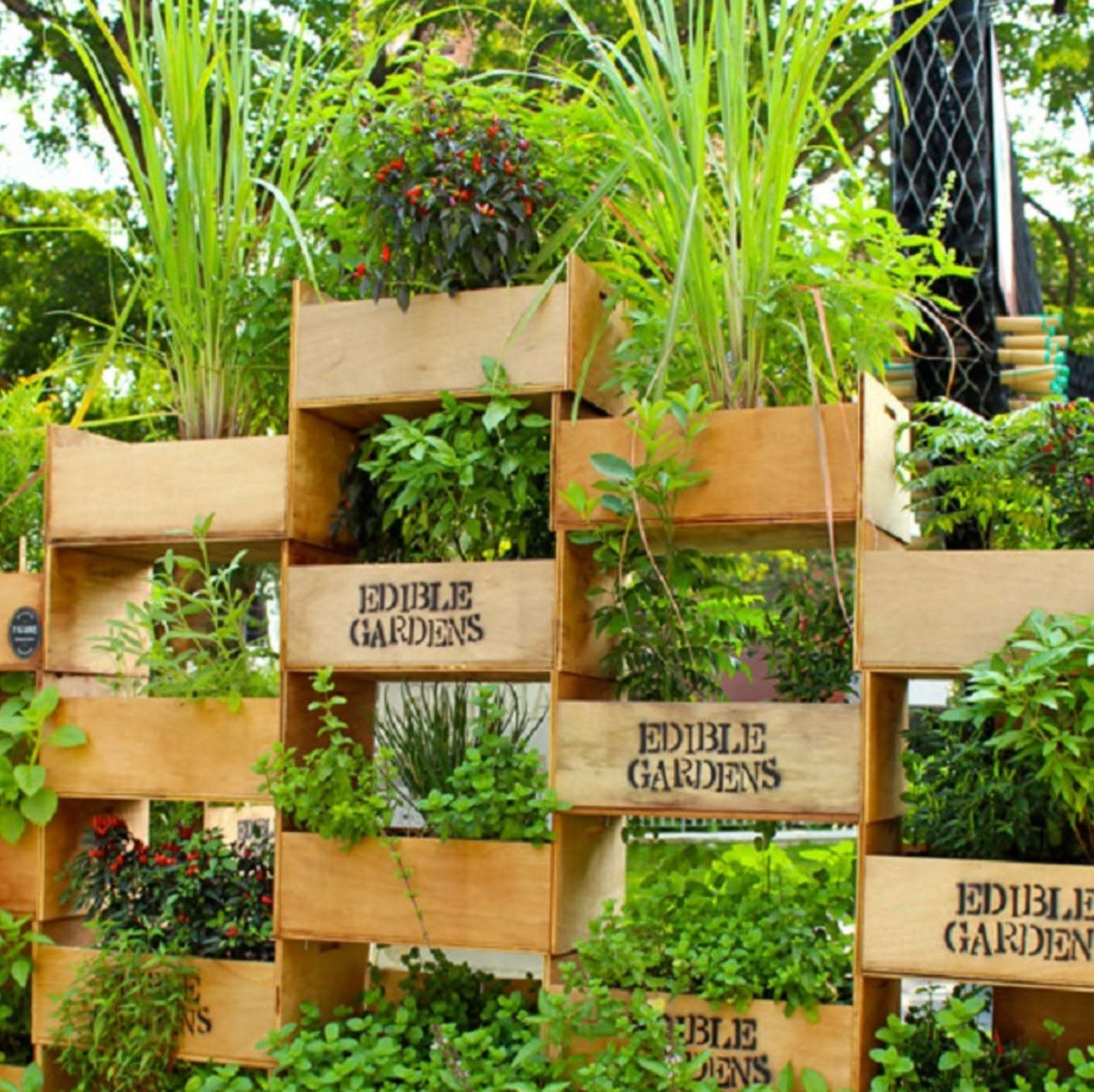
source@urbangreenfarms
If you have limited horizontal space, why not grow your vegetables upwards? A vertical garden uses wall planters, trellises, or tiered structures to make the most of small areas while adding visual interest to your backyard. This method is perfect for growing vining crops like cucumbers, tomatoes, and squash. Not only does it save space, but it also helps reduce pests and diseases by keeping plants off the ground. A vertical garden planter is an excellent investment for anyone looking to build an efficient and space-saving vegetable garden.
7. Keyhole Garden – A Self-Sustaining, Eco-Friendly Design
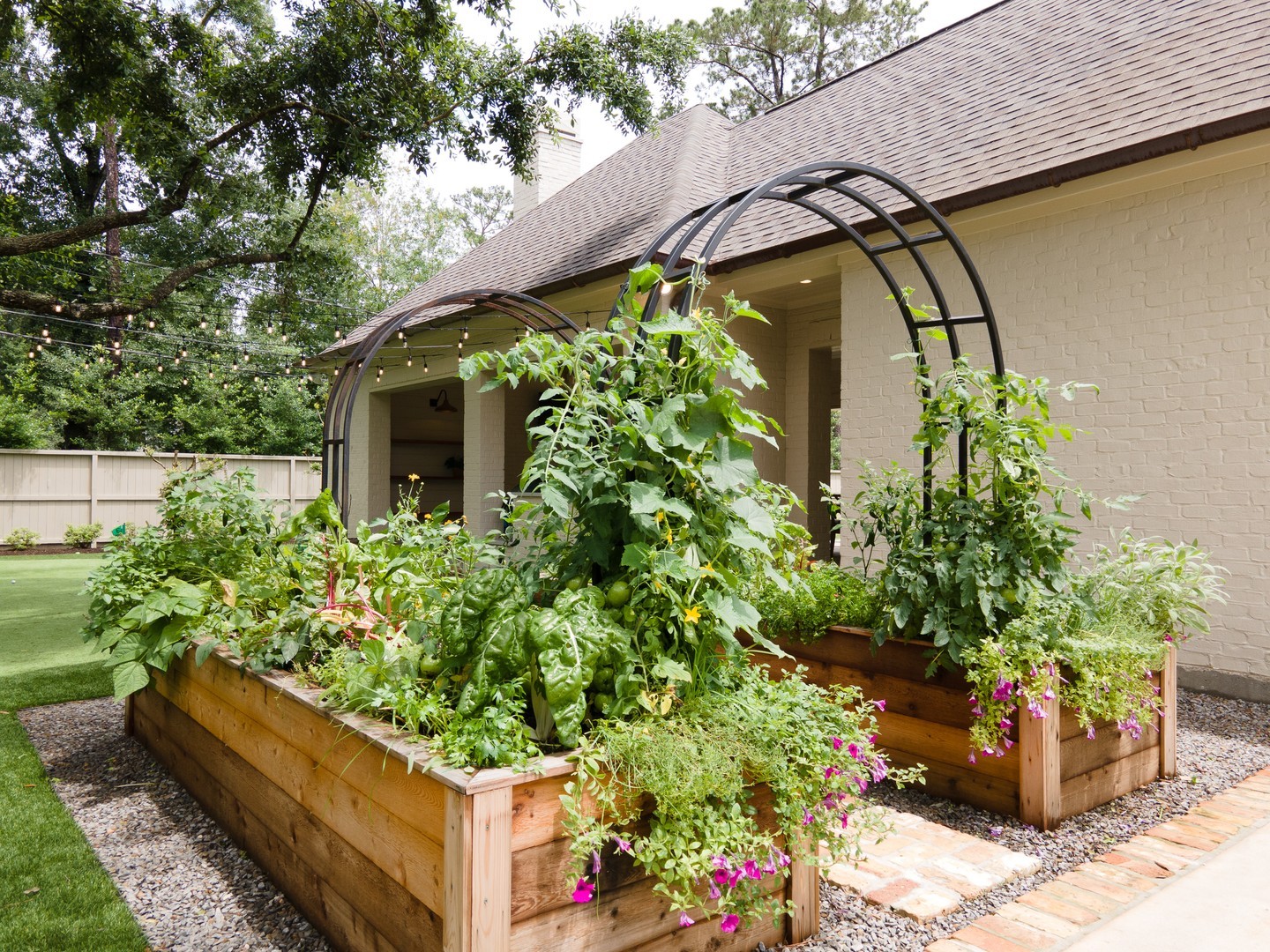
source@rootedgarden
A keyhole garden is a unique circular layout with a built-in composting system at its center. This design was originally developed for arid regions but has gained popularity worldwide for its sustainability. The composting basket in the middle continuously enriches the surrounding soil, reducing the need for fertilizers. The circular shape allows for easy access to all plants, making it a highly efficient and eco-friendly gardening method.
8. Row Cropping Layout – Traditional Yet Effective
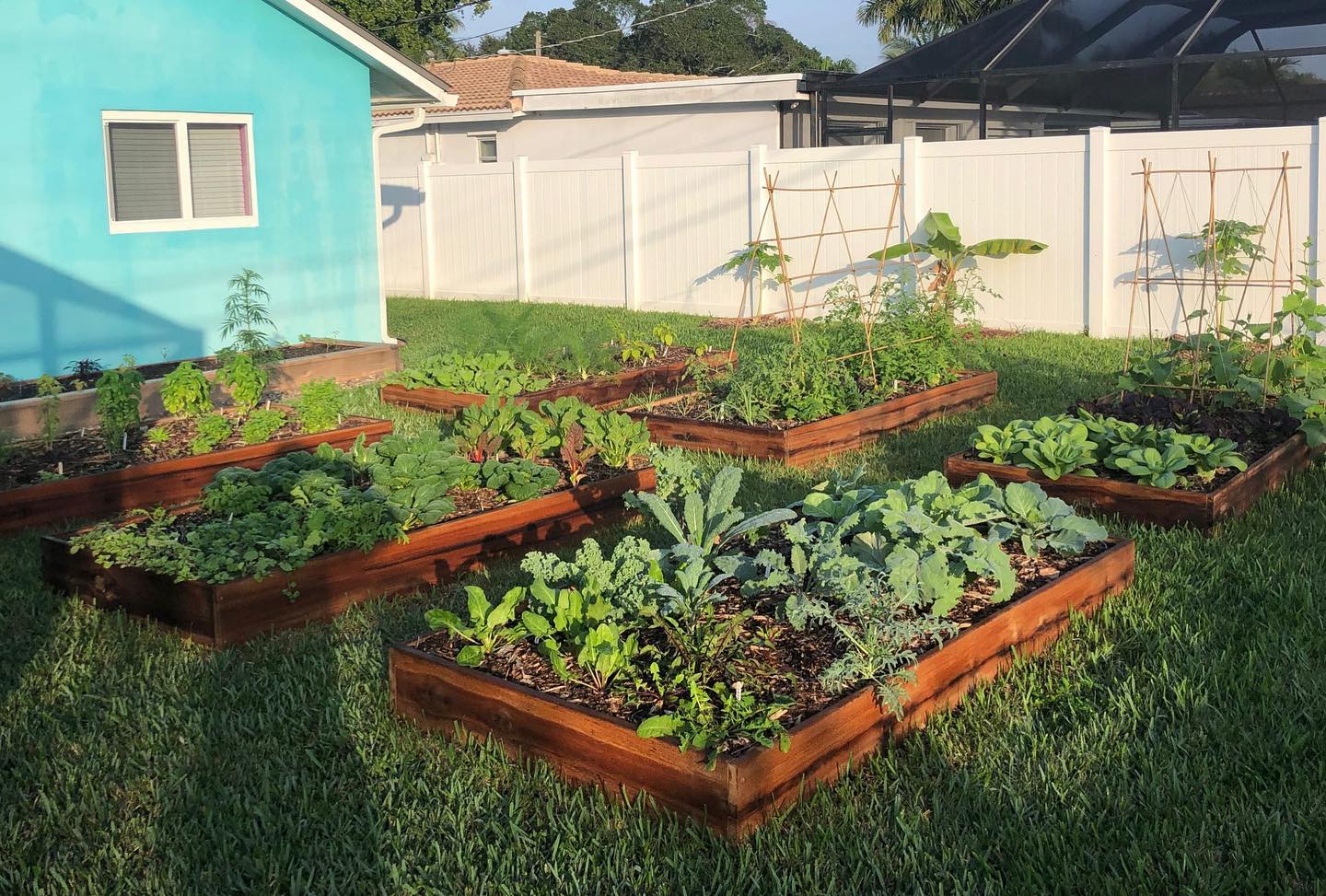
source@readytogrowgardens
Row cropping is the most common method for large vegetable gardens, where plants are arranged in long, straight rows with pathways in between. This layout is ideal for large backyards and allows for easy access with gardening tools like hoes and wheelbarrows. While it requires more space than some of the other layouts, it provides excellent airflow, reducing the risk of fungal diseases.
9. Mandala Garden – Aesthetic and Functional
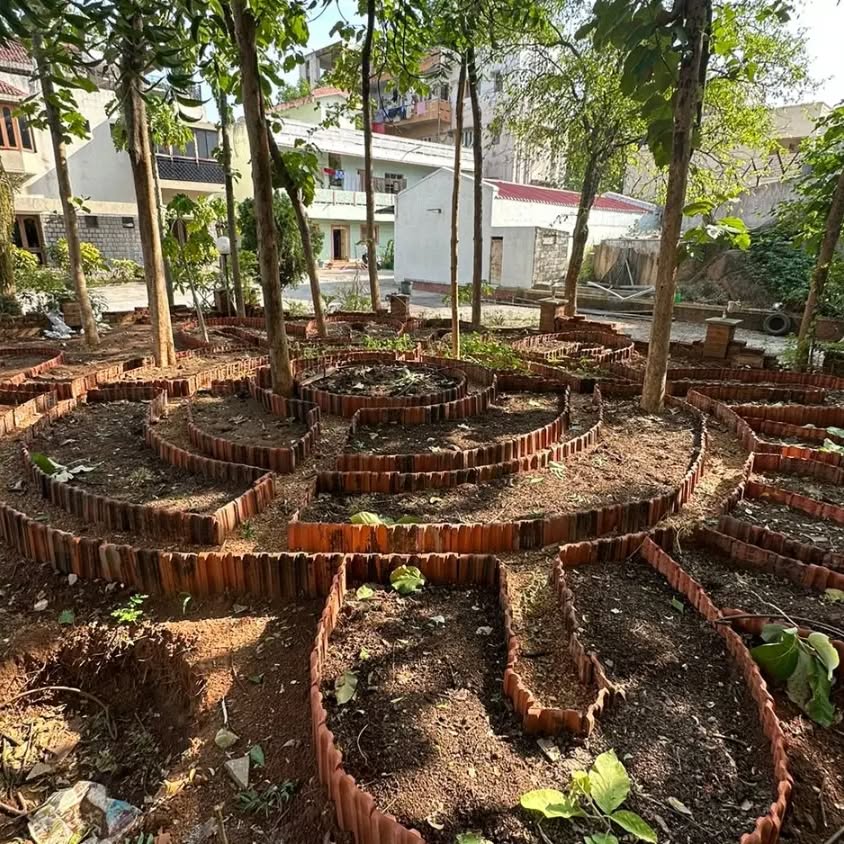
source@tribepermaculture
A mandala garden is a visually striking circular layout that creates natural planting zones radiating from a central point. Inspired by permaculture principles, this layout promotes diversity and efficient space usage. It also adds an artistic touch to your backyard, turning your vegetable garden into a stunning focal point.
10. No-Dig Garden Layout – Healthier Soil, Less Effort
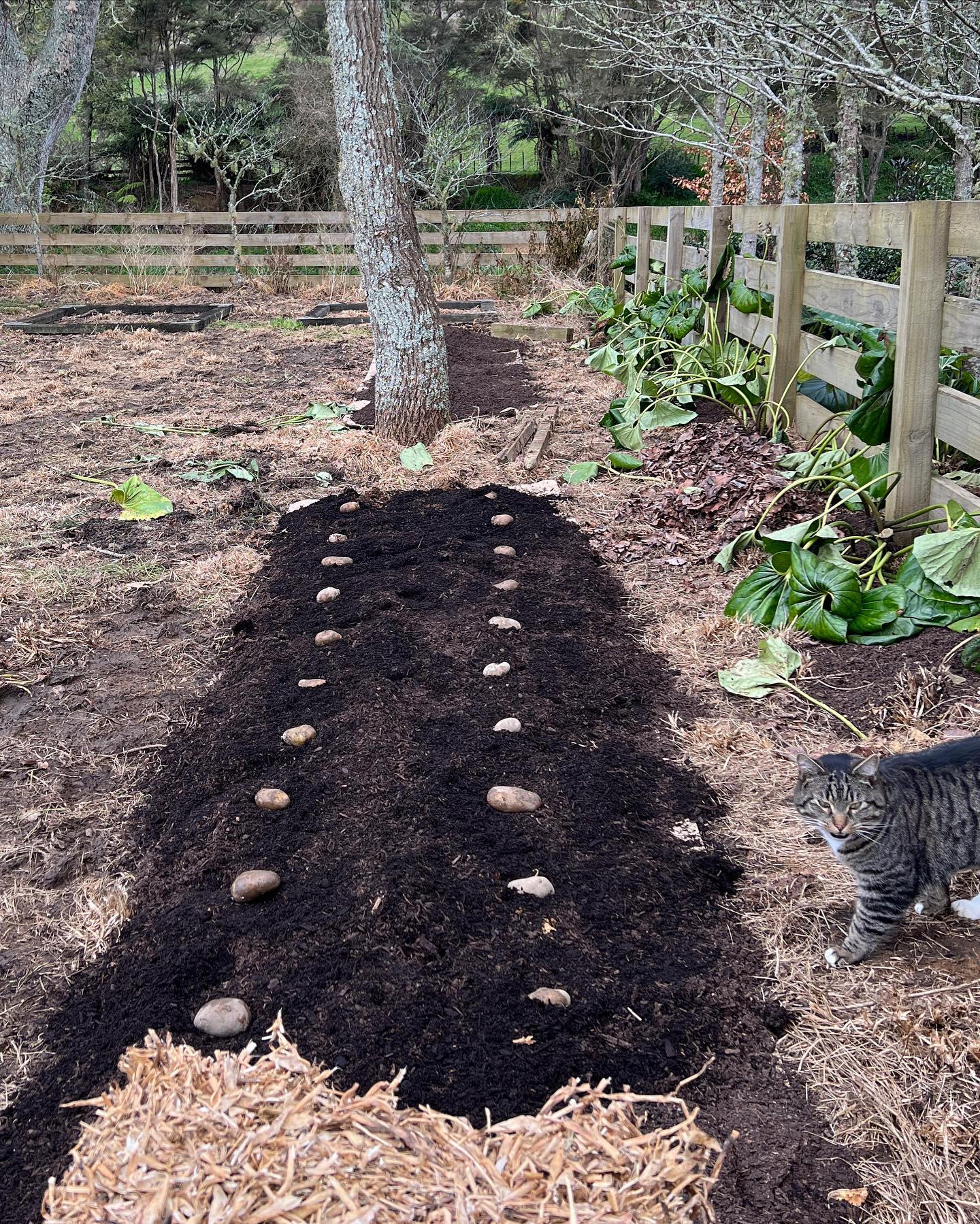
source@lyndahallinan
A no-dig garden minimizes soil disturbance, allowing beneficial microbes and worms to thrive. Instead of tilling, you add layers of organic materials like compost and mulch to build nutrient-rich soil. This method reduces weeds and helps retain moisture, making it an excellent low-maintenance option. A mulching fabric can further suppress weeds while maintaining soil health.
11. Hugelkultur Garden – A Sustainable Raised Bed Alternative
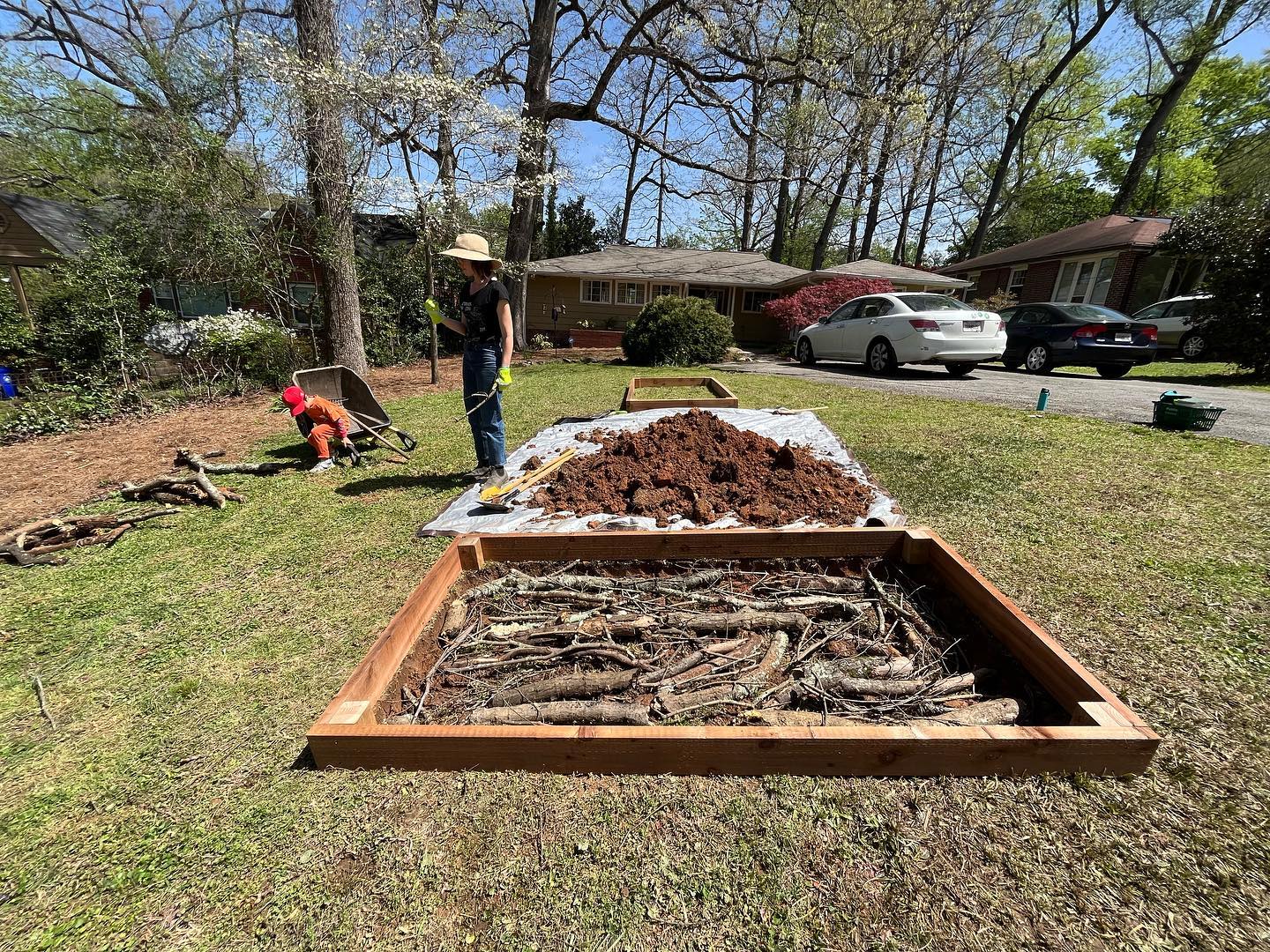
source@atplanta.ga
Hugelkultur is a permaculture gardening technique that involves building a raised bed over a pile of decaying wood, leaves, and organic matter. This layout provides excellent water retention and long-term soil fertility, making it ideal for low-maintenance gardening. The decomposing wood at the core acts like a sponge, storing moisture and nutrients that slowly release over time. This method is perfect for areas with poor soil, as it naturally improves soil quality over the years. To get started, consider using organic compost and mulch to help create a nutrient-rich foundation for your hugelkultur garden.
12. Spiral Herb and Vegetable Garden – A Space-Efficient Design
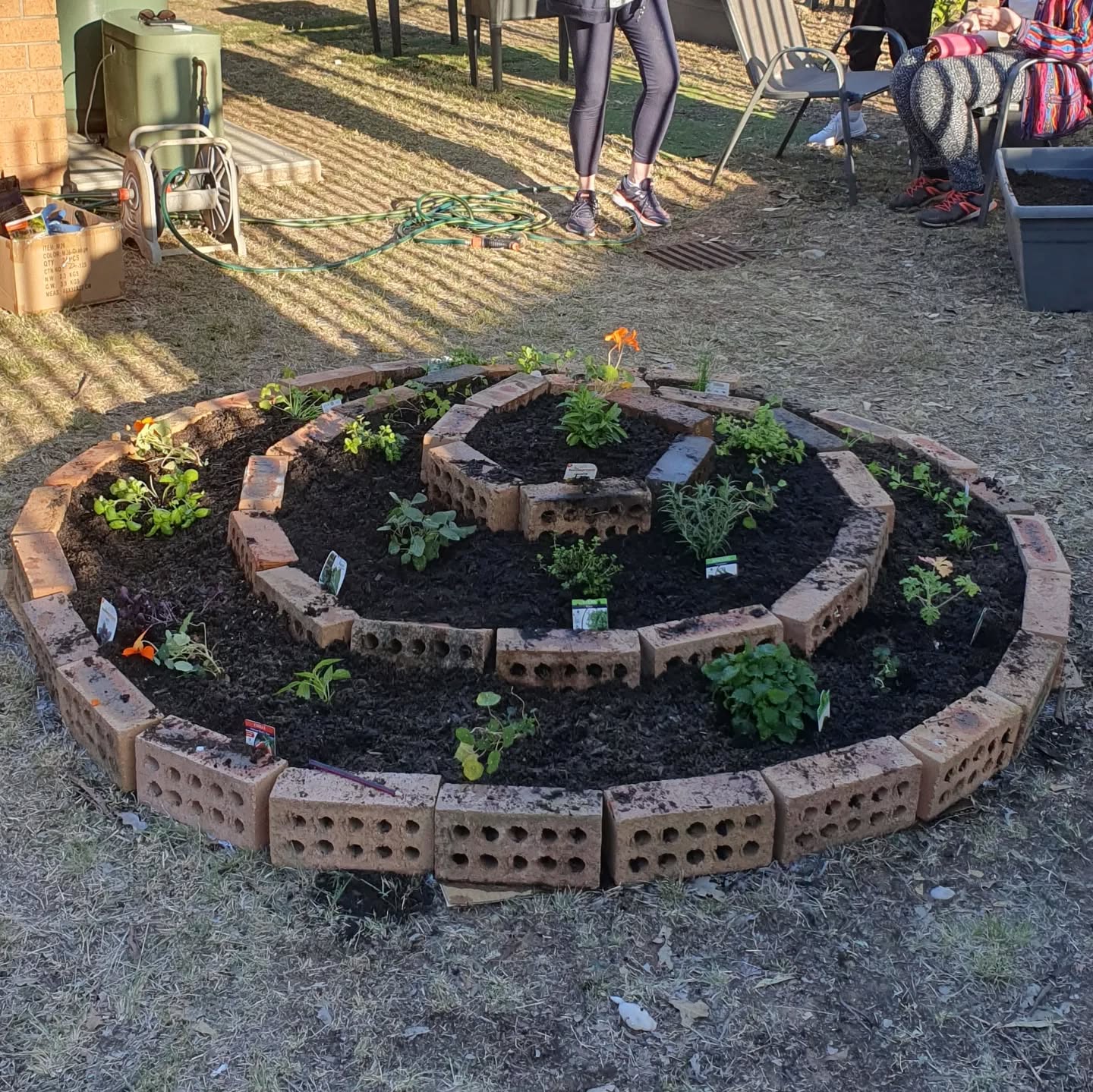
source@the_veggie_lady
A spiral garden is a creative and space-saving way to grow vegetables and herbs in a compact area. This layout consists of a raised, circular mound that spirals upward, allowing you to plant different crops based on their sun and water requirements. The top of the spiral receives more sunlight and drains quickly, making it ideal for dry-loving plants like rosemary and oregano, while the lower sections retain more moisture, perfect for leafy greens. A spiral garden kit can help you build this unique structure effortlessly.
13. Pallet Garden – A Budget-Friendly Vertical Option
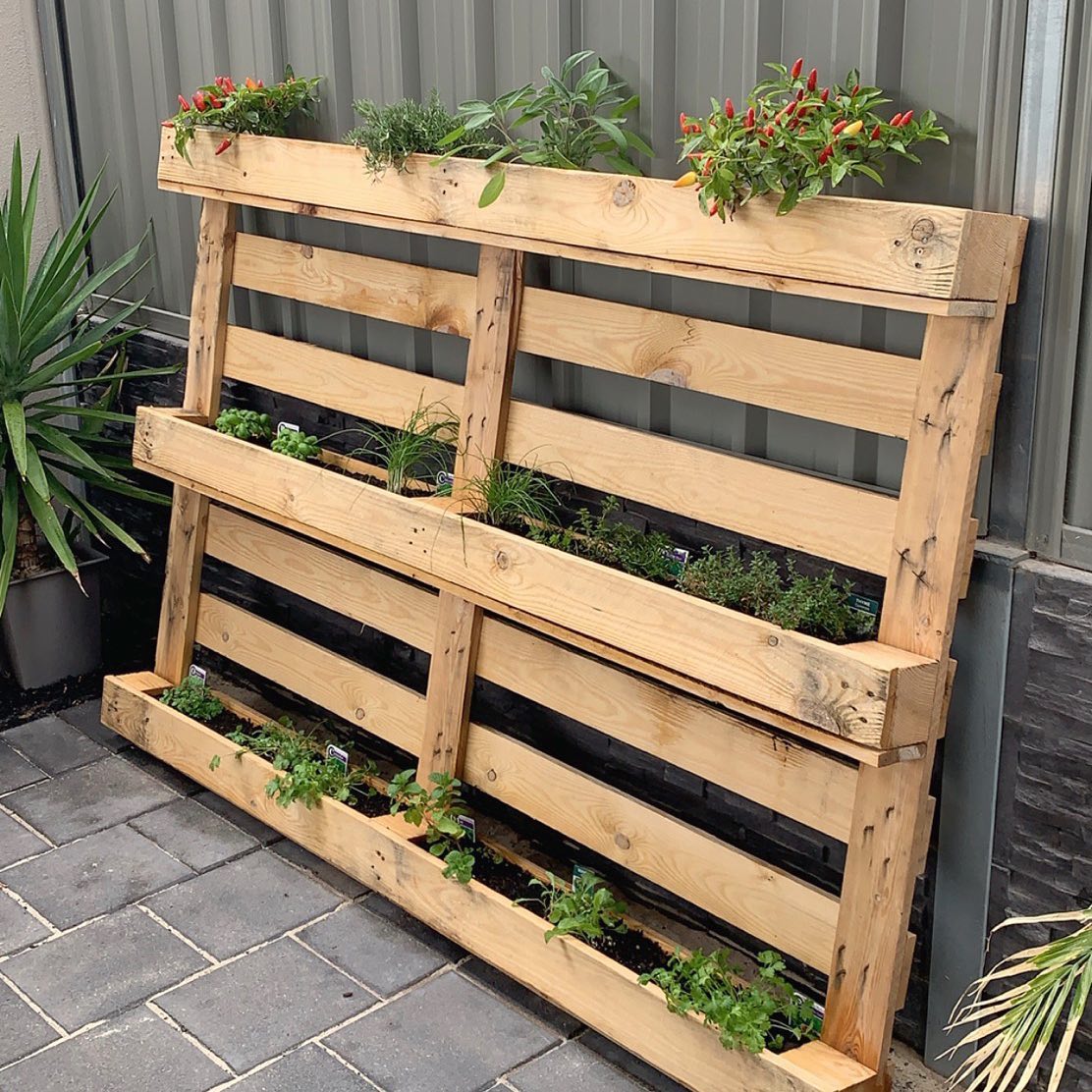
source@hunthuntproperty
A pallet garden is a fantastic low-cost solution for those who want a vertical vegetable garden. By repurposing wooden pallets and filling them with soil, you can create an upright planter for small vegetables, herbs, or salad greens. This method works well for patios, balconies, or small backyards. Plus, it’s an eco-friendly way to recycle materials while growing your own food. Using fabric grow bags inside the pallet can help keep the soil contained and prevent spills.
14. Greenhouse Garden Layout – Extend Your Growing Season
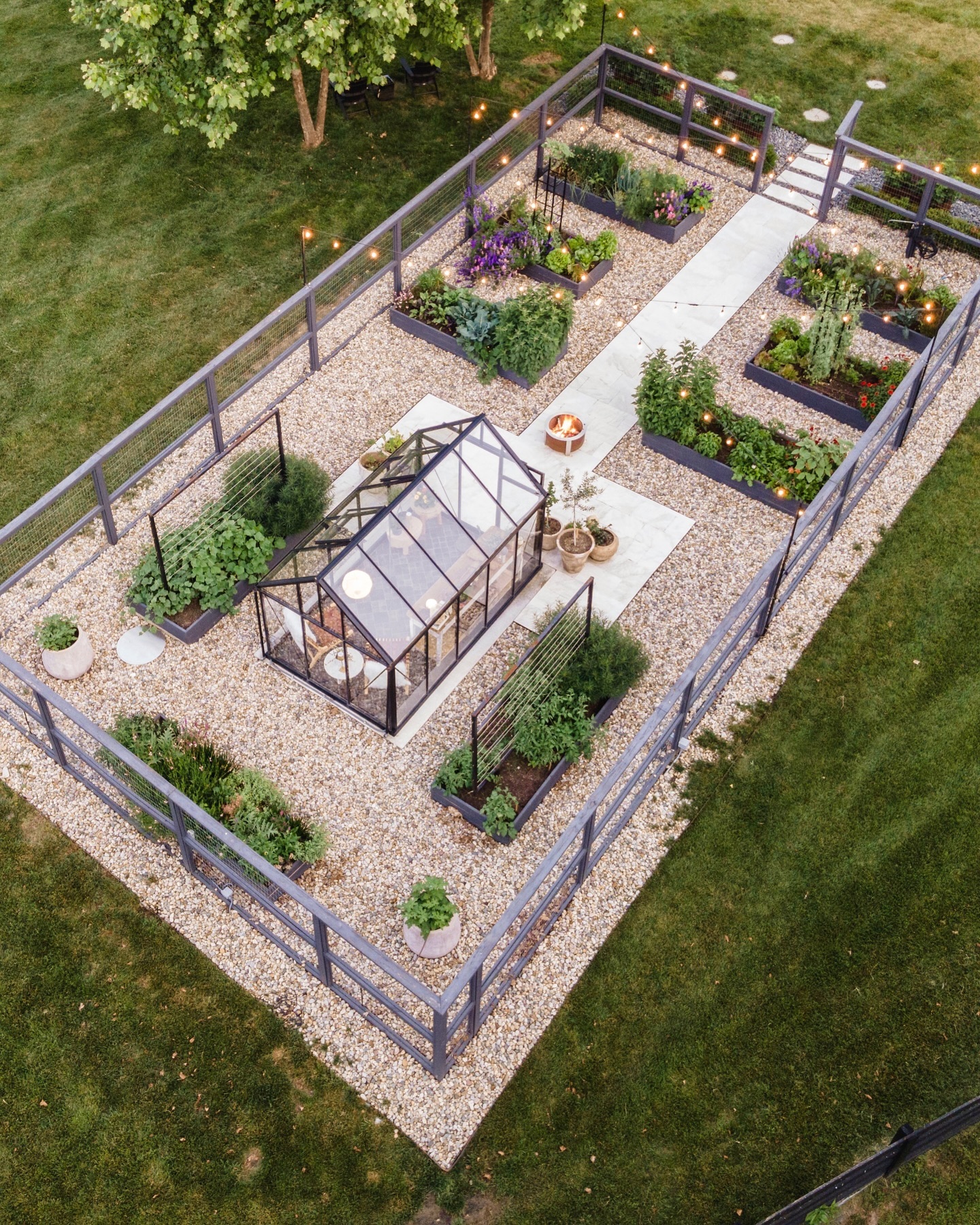
source@saragasbarra
A greenhouse layout allows you to grow vegetables year-round, protecting your plants from extreme weather conditions. Whether you opt for a small portable greenhouse or a larger permanent structure, this design provides an ideal environment for temperature-sensitive crops like tomatoes, peppers, and lettuce. If you want to invest in a greenhouse, a pop-up greenhouse tent is a great option for backyard gardeners who need an affordable and easy-to-set-up solution.
15. Potager Garden – A French-Inspired Edible Landscape
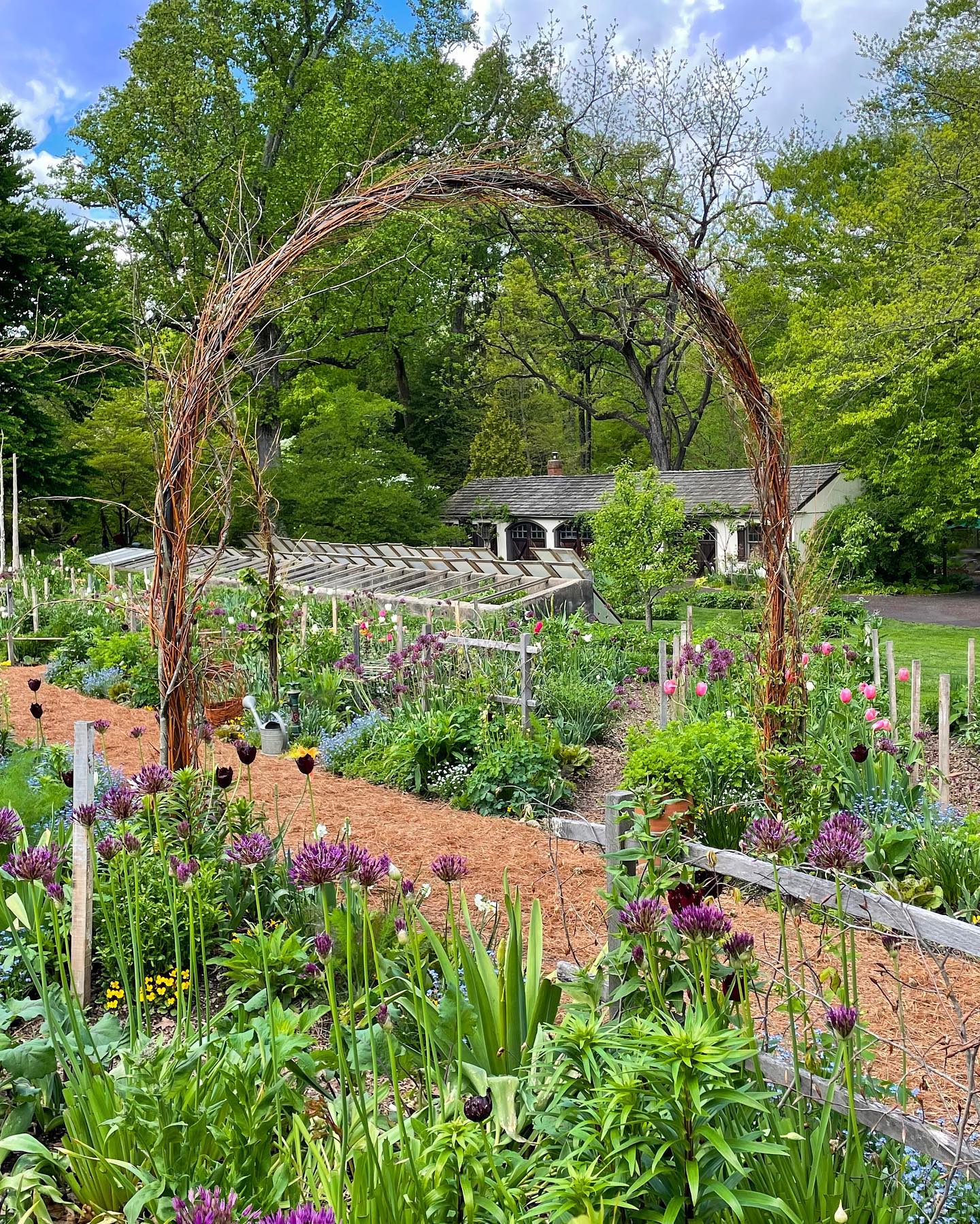
source@loithai
A potager garden, also known as a kitchen garden, combines vegetables, fruits, flowers, and herbs in an artistic, ornamental design. This layout is perfect for those who want a visually appealing yet highly productive vegetable garden. Paths, geometric beds, and companion planting techniques help maximize space while creating a beautiful, functional area. If you want to design a stylish potager garden, a garden edging kit can help define planting sections elegantly.
16. Edible Landscaping Layout – Integrating Vegetables into Your Yard
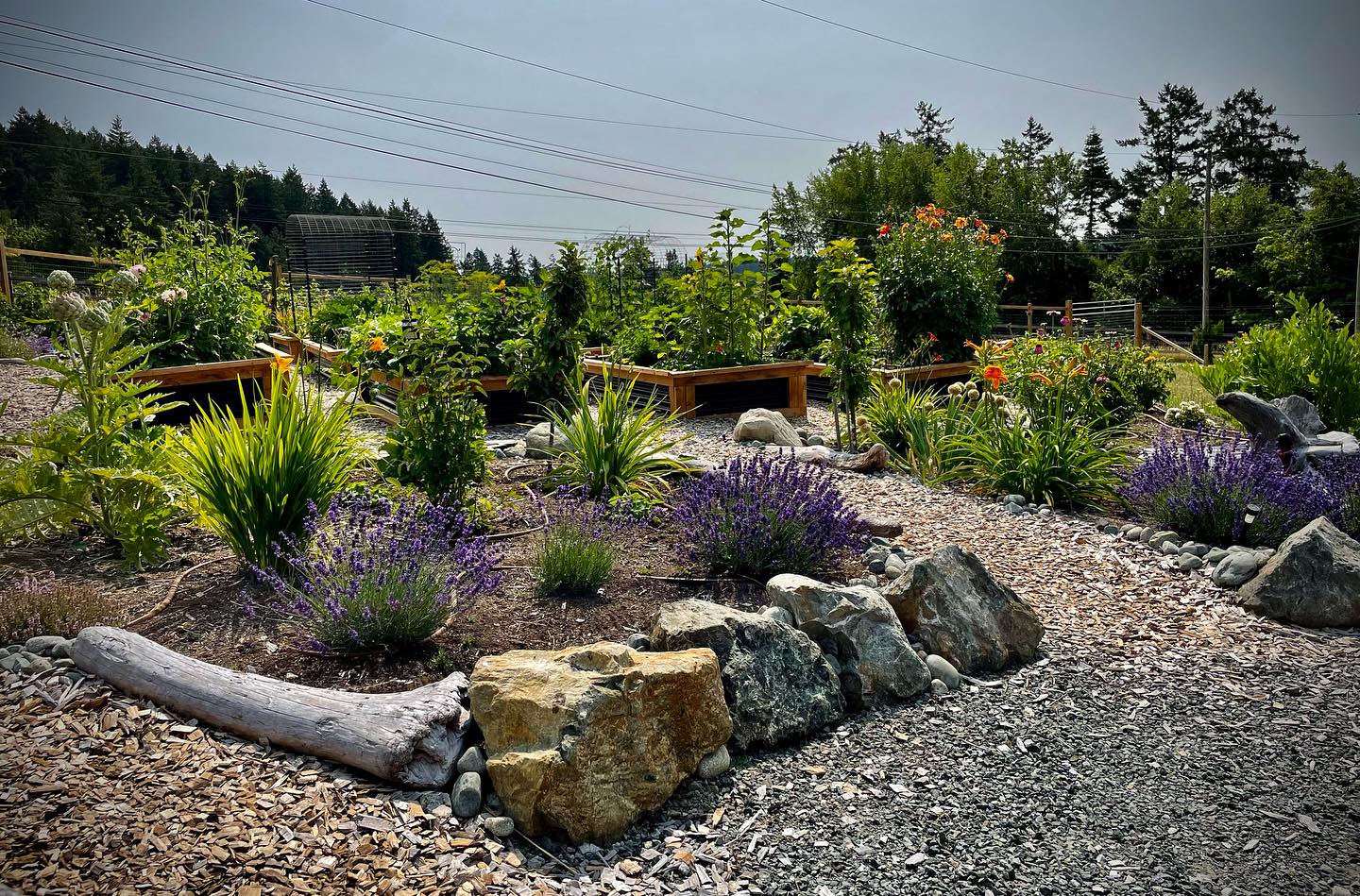
source@edible.design
Edible landscaping is an innovative approach that incorporates vegetables, fruits, and herbs into traditional landscaping designs. Instead of separating your vegetable garden from your flower beds, you can blend food-producing plants seamlessly into your landscape. For instance, kale and Swiss chard can serve as decorative foliage, while climbing beans and cucumbers can grow along trellises. A garden design book can provide inspiration for creating an aesthetically pleasing edible landscape.
17. Tiered Raised Garden – Maximizing Vertical Space
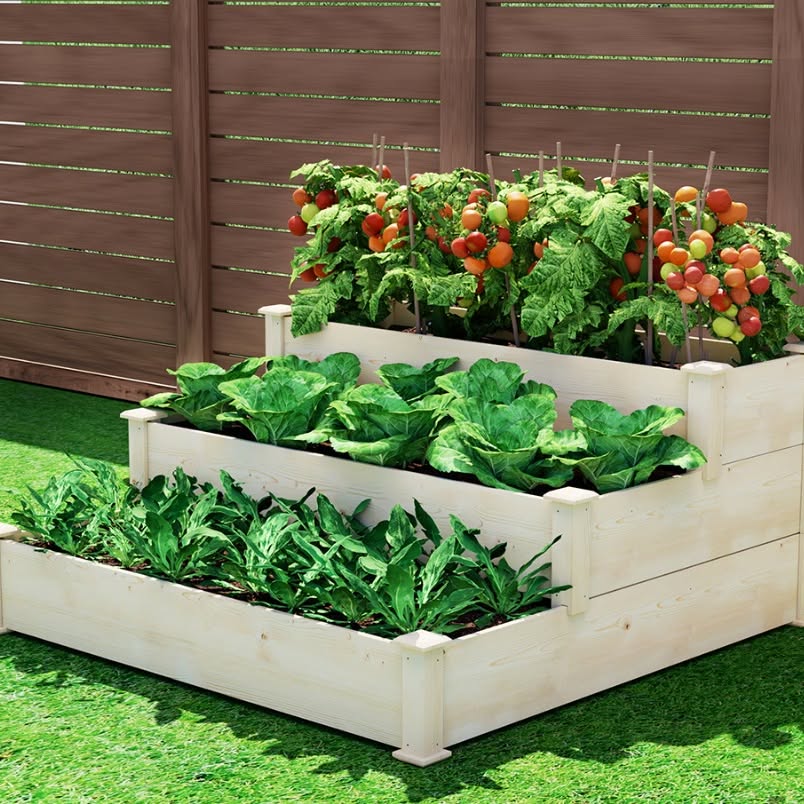
source@urbangreenfarms
A tiered raised garden is an excellent solution for gardeners with limited space or sloped yards. This layout involves stacking different-sized raised beds in tiers, creating multiple levels for planting. The cascading effect not only saves space but also improves drainage and sunlight exposure. A tiered raised garden planter is a great way to get started with this space-efficient design.
18. Wicking Bed Garden – A Self-Watering System
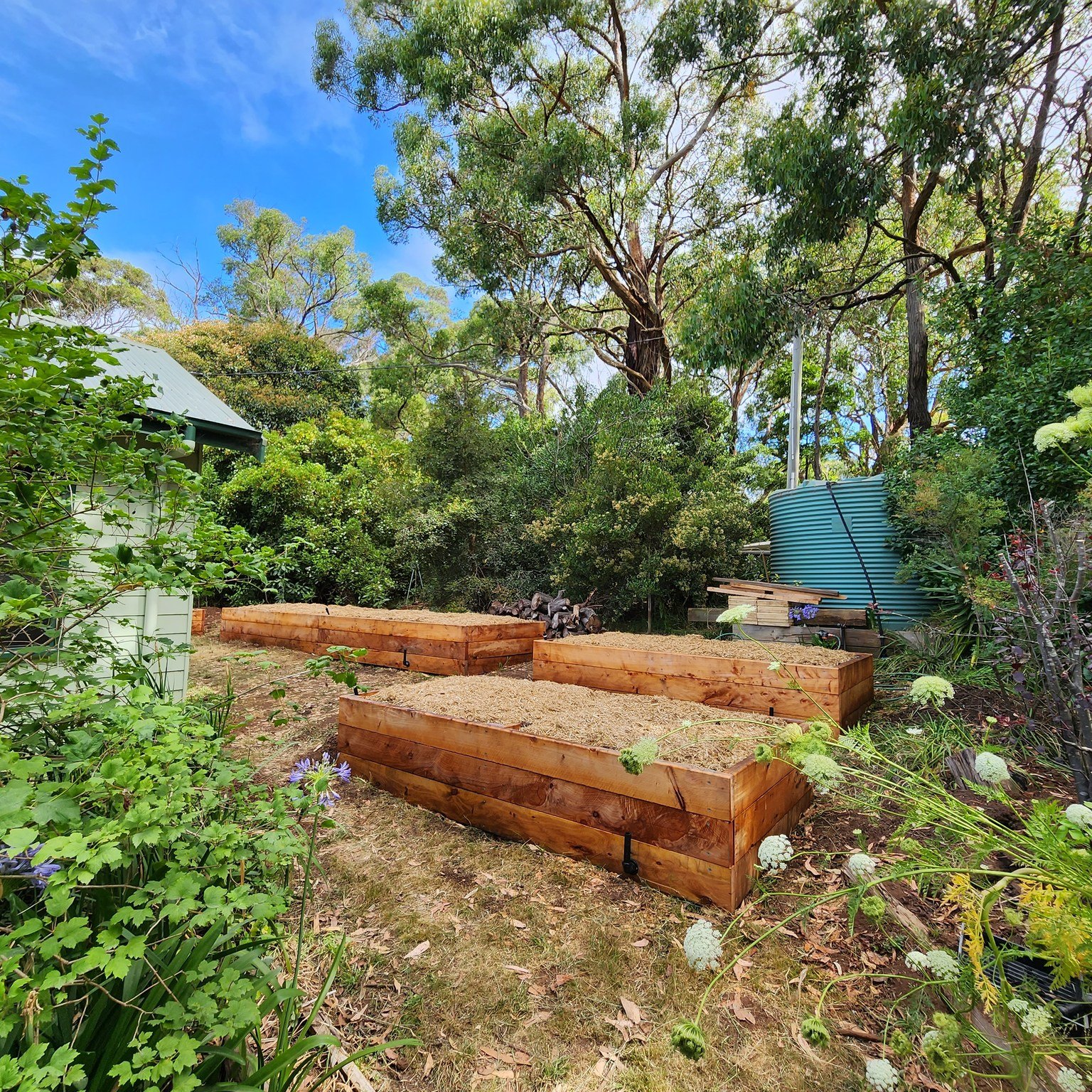
source@veg_wicking_beds
A wicking bed is a self-watering garden system that uses a water reservoir beneath the soil to provide consistent moisture to plant roots. This layout is perfect for dry climates or gardeners who don’t have time to water their plants daily. By reducing water evaporation and runoff, wicking beds promote deep root growth and healthier vegetables. If you want to build one, a self-watering garden bed kit can simplify the process.
19. Window Box Vegetable Garden – Perfect for Small Yards
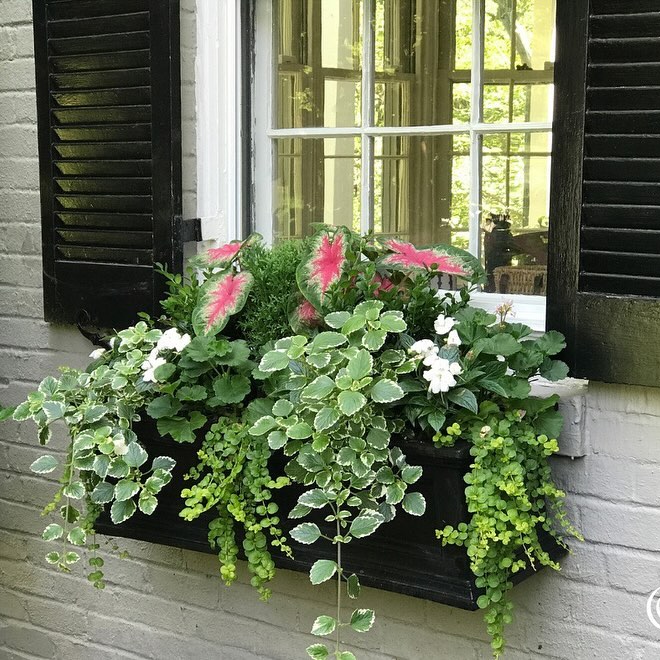
source@contained_creations
Even if you don’t have a backyard, you can still grow vegetables using window boxes. This compact gardening method works well for herbs, salad greens, and small root vegetables like radishes and carrots. Window boxes provide excellent drainage and can be easily moved for optimal sunlight exposure. If you’re interested in this layout, a set of durable window box planters will be a great addition to your space.
20. Raised Trough Garden – Ideal for Urban Gardeners
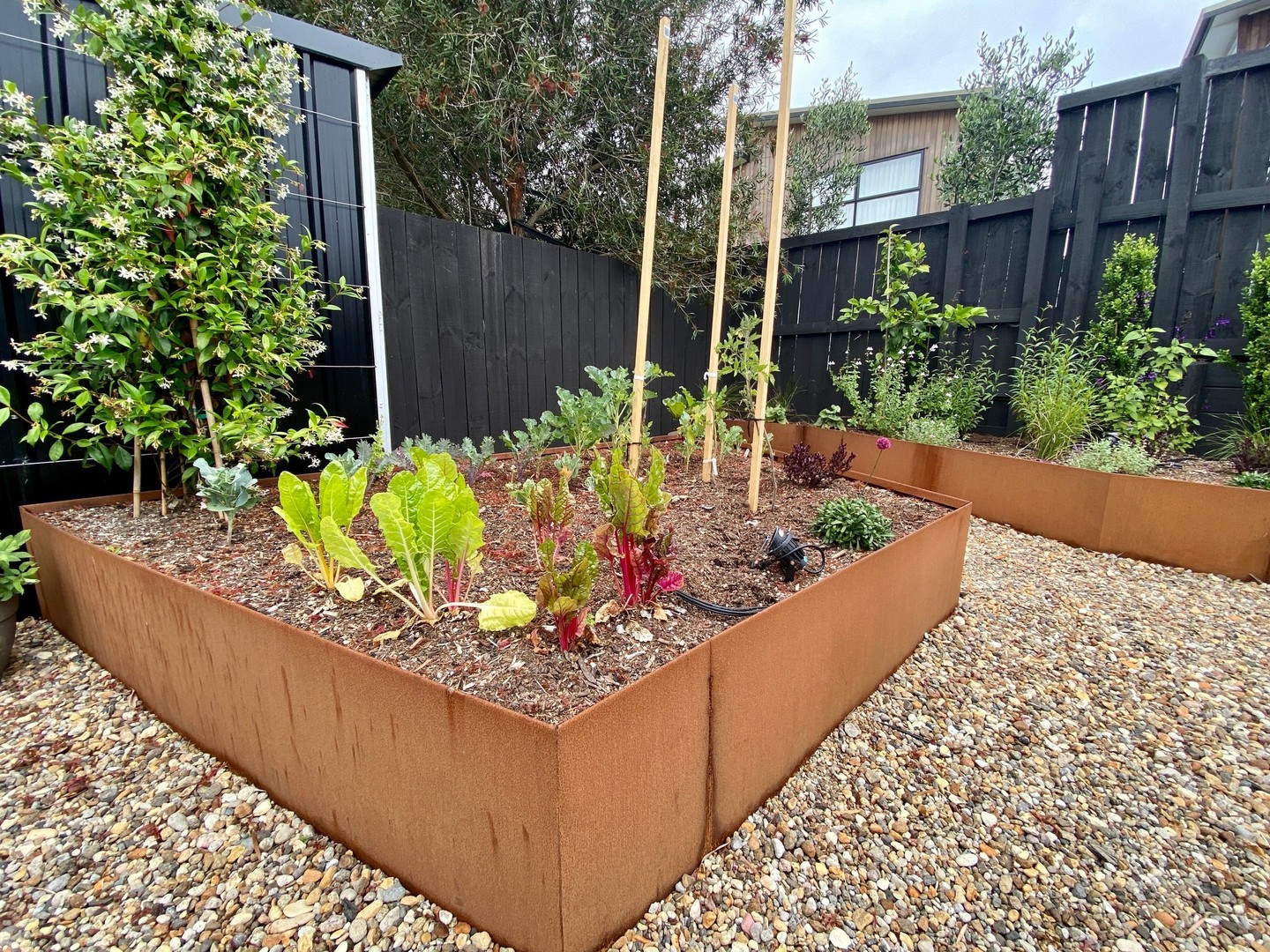
source@citybotanics
A raised trough garden is a modern take on raised beds, using large metal or wooden troughs as planting containers. These elevated gardens offer excellent drainage, prevent soil compaction, and keep pests like rabbits and slugs at bay. They are perfect for small urban spaces, patios, or rooftops. Many gardeners use galvanized metal raised beds, which are stylish, durable, and rust-resistant.
21. Balcony Vegetable Garden – A Container-Based Approach
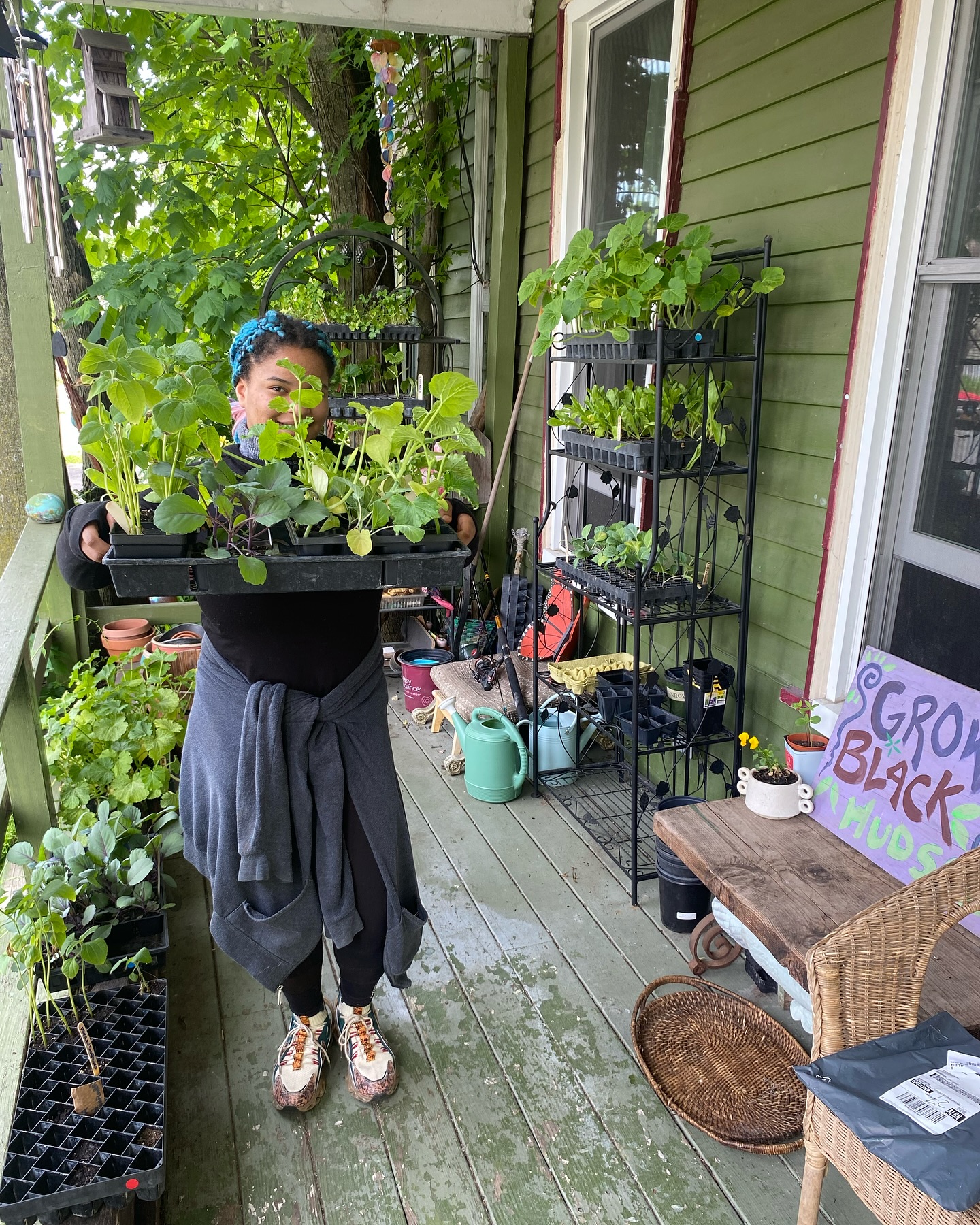
source@growblackhudson
For those living in apartments or townhouses, a balcony vegetable garden provides the perfect way to grow fresh produce in a limited space. Using a combination of pots, hanging baskets, and vertical planters, you can cultivate a variety of vegetables even with minimal room. Grow bags and stackable planters are excellent options for maximizing space. A set of stackable garden planters can help you create a productive and organized balcony garden.
22. Food Forest Garden – A Permaculture Dream
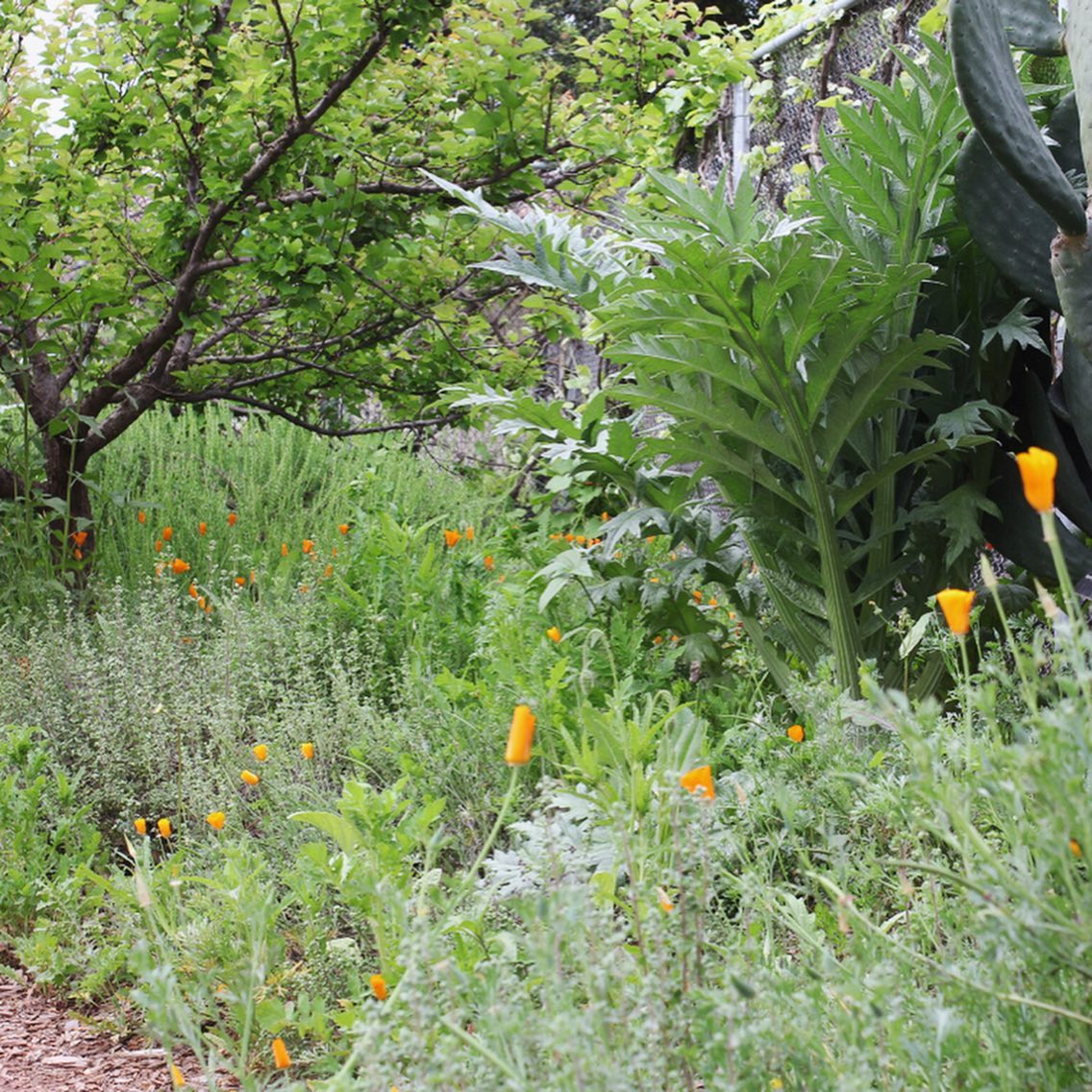
source@nhmla_naturegardens
A food forest garden mimics the natural layers of a forest, incorporating fruit trees, shrubs, herbs, and groundcover plants to create a self-sustaining ecosystem. This design requires careful planning, but once established, it provides a low-maintenance, high-yield food source with minimal human intervention. The key to a successful food forest is biodiversity, using companion planting principles to support plant health. A permaculture gardening book can help guide you through the process of setting up a thriving food forest in your backyard.

